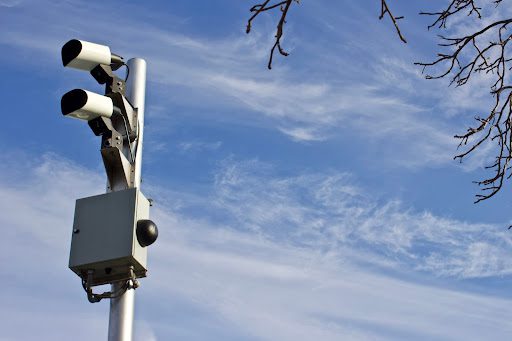Are you exploring ALPR solutions but feel overwhelmed by the choices? Since not all ALPR software is created equal, you must home in on the features that will be integral for your use case when choosing your ALPR solution.
History of ALPRs
While automated license plate recognition seems like new technology, it’s been around since the 1980s. Early models were designed to help law enforcement identify vehicles by license plate to check their status in the related database.
These early models were clunky analog units. Think beige desktop PC. Thankfully, they’ve evolved, like other digital technologies, to be lightweight and far more accurate than those from the late CHiPs era.
Evolution of ALPR Use Cases
As these ALPRs become more sophisticated and accurate, their applications have also expanded.
Aside from the original use in law enforcement agencies, ALPRs are also regularly used to secure public places, communities, and commercial properties, as well as improve customer experiences by optimizing gated access locations and even drive-thru destinations.
To optimize these uses, the ALPR is considered part of a larger ecosystem, integrating with analytics tools and IoTs to provide customers with practical, actionable information to accelerate positive community and business outcomes.
5 Key Areas of Focus to Narrow Your ALPR Vendor Search
1. Tag Recognition Accuracy
If the ALPR doesn’t nail its primary objective, none of the other bells and whistles matter. The “industry average” is reported to be 95.05%. Every vendor will throw around accuracy numbers like pick-up lines at a singles bar. Make sure you ask for validated proof of any claim. Plus, when evaluating an ALPR vendor’s accuracy claim, confirm the conditions under which those numbers are presented.
Tag recognition accuracy can drop precipitously with some vendors depending on conditions such as:
- Time of day
- Weather conditions
- Speed of vehicle
- Camera position and maximum angle for image capture
- Location (affected by the number of plate types and infrastructure)
By matching your conditions to the vendor’s specific capabilities, you can cut through the features unimportant to you and focus on what’s critical. For instance, if you’re looking for the ideal ALPR to manage your drive-thru, being able to capture vehicle plates at 100 mph isn’t likely to be a helpful feature, but accurate image captures at dusk might be.
Ask for region-specific case study examples of accuracy under your common conditions and competitive test results. Also, discuss false-positive rates with your vendors—capturing the wrong information is worse than capturing no information, as those false positives require secondary confirmation or awkward misidentifications.
2. Image capture and storage
Some ALPR vendors only capture one image, while others collect multiple images.
- How many images does the vendor capture to verify the license plate?
- What output options are available?
- Can the vendor capture vehicle make, model, and color?
- How are the images tracked and stored in the database?
3. Get Smart
Although this is high-tech gadgetry that Maxwell Smart would love to tap into, we’re talking about what the ALPR does once it gets the data and how fast it can get you meaningful, actionable information. Different vendors have different AI engines that help process ALPR data. The details of HOW they process that information will significantly impact what you get back and when. Some questions to ask your short list of vendors:
- So you’re using AI. How often do you update the engine based on new key learnings?
- How has their AI engine improved over the last 12 months?
- Where does the ALPR data get processed? At the edge or in the cloud?
- How fast does your ALPR process information?
4. Connectivity
Do you need a solution that works in a less-than-ideally-connected environment? Find out how your potential vendors connect to your existing infrastructure, given the possible limitations of your environment.
- Does the ALPR vendor have a solution to suit your needs of only on-premise without internet?
- What about cloud-based?
- What kind of hardware does the ALPR solution require to run effectively?
- Can it work on your Linux, Windows, Jetson, Raspberry Pi, or Mac system?
5. Third-party integrations
Most of today’s ALPR use cases involve connecting the ALPR to more complete ecosystems, ranging from law enforcement hot lists to parking lot credentialed vehicle registries. Different solutions will provide different ways to store, connect, and view data, from cloud integrations, webhooks, and APIs to dashboards and alerts.
Think again about your use case and your ideal scenario to optimally meet your organization’s needs. Viewing ALPR vendors through this lens will allow you to cut through the clutter and narrow your list to those best suited for exactly what you need.
6. Compare pricing
Run the math on ALPR prices to determine what best fits your budget. Different ALPR vendors set up pricing structures differently, so the best way to figure your cost is to run the math based on your anticipated volume. Doing so will allow you to understand the total financial commitment better so you can decide the best price/value vendor for your needs.
In summary, when looking for an ALPR software vendor, outline your ideal usage case in your own words, then evaluate each vendor based on:
- Tag Recognition Accuracy in your common conditions
- Image capture and storage
- Get Smart: where does the AI Engine process information, and how often does it update
- Connectivity: does it work with your hardware, with or without internet
- Third-party integrations: will it connect to your existing ecosystem
- Compare pricing: what’s the actual price per lookup vs. the value provided

































